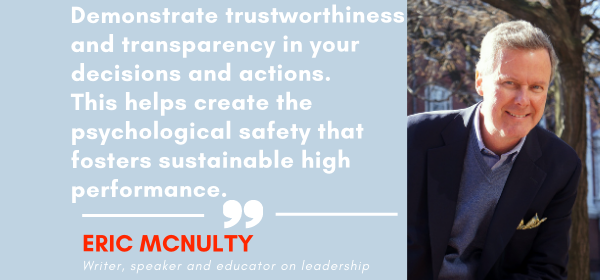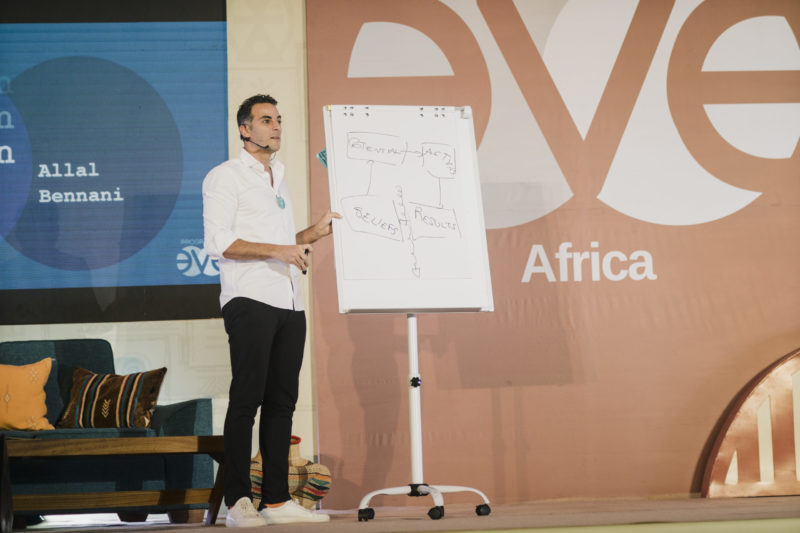Leading at Arm’s Length
Meeting the challenges of managing a remote workforce
By: Eric J. McNulty for the EVE webmagazine
Crises are accelerators. In the case of coronavirus, it has sped the move to remote work and distributed teams from emerging trend to established reality. While the mechanics were forced upon us quickly; the adjustments to leading and managing have proven more difficult to navigate. Managing is about the projects while leading concerns the people. Take care of the people and they will take of the projects.
The most important thing to remember is that we are still human beings. Our basic drives, needs, and instincts remain unchanged, though not unaffected, by our new circumstances. As humans, we are social and emotional. Although modern organizations have emphasized competition, our success as a species is equally rooted in collaboration and cooperation. According to self-determination theory, a primary driver of psychological satisfaction at work is relatedness, or social connection.
Leaders need to be space makers, creating spaces for social interaction now that people are not bumping into each other at the coffee station. The trick is that is this cannot be forced through artificial Zoom happy hours. Nor will the manager who was distant before Covid-19 suddenly transform into a paragon of emotional intelligence. Instead, rely on the informal leaders in the organization to light the path. Likely they already are. Check in with these natural connectors to find out what’s working and ensure that no one is being overlooked or opting out. The disconnected could be feeling greater stress than they are letting on.
Another facet of psychological satisfaction at work is competence. Encourage employees to demonstrate their skills through solving the many puzzles coronavirus-related changes have given us. Meeting the distinct challenges of reconfiguring supply chains, adapting to changed customer expectations, and reenergizing operations all offer ample opportunities for creativity and innovation. Look beyond the usual suspects. Engage workers up, down, and across the organization to lay the groundwork for accelerating out of our current difficulties. I have yet to encounter an organization where deep understanding of problems and possible solutions were not abundant. Yet that insight often has difficulty finding the light of day through standard channels. The shakeup of physical work arrangements offers the chance to create ad hoc teams and tap into heretofore overlooked reservoirs of ideas and inspiration.
These needn’t all be new issues. Several organizations I have spoken to over the past few months have been tackling updates to policies and procedures that have otherwise been a low priority because of the demands of day-to-day activities. Changes wrought by the coronavirus response create possibilities. From fixing outdated processes to digital transformation, there are opportunities to be aspirational.
In enabling initiative and independence, leaders also unlock the third major driver of satisfaction at work: autonomy.
Another consideration for leaders in turbulent times is resilience. I think of resilience as moving forward through adversity with confidence in a better future, no matter how difficult current circumstances. Leaders need to bring hope to their teams which can be more difficult when workers are not co-located. Simply reminding people that “we’ll get through this” and that you are certain because of the strength of the team is a good start. Creating clarity around the larger goal and each person’s contribution to achieving it will help the hope spread.
Demonstrate trustworthiness and transparency in your decisions and actions. This helps create the psychological safety that fosters sustainable high performance.
Resilience is also strengthened through sanity saving boundaries. A recent report suggests that as many as one-in-four women are considering “downshifting their careers or leaving the workforce” because of the coronavirus. Americans, at least, are working longer hours now that they are working from home. My experience with large multinational corporations is that workers are pushed hard in the best of times. Companies often tout a commitment to work-life balance. However, as executive coach and communications expert Dain Dunston pointed out to me, the very construct of the phrase is problematic: “work” is posited as separate from “life” and it comes first. Now that workers are juggling new work arrangements, home schooling, and other novel contingencies, the focus should be on “life balance.”
The modeling for this must come from those with the most power. Short of hair-on-fire emergencies, cease emails after 6:00 p.m., for example. Insist that everyone take time to rest and recharge. Invest in home office necessities so that parents and children aren’t competing for keyboards or bandwidth. Acknowledge their needs as multi-faceted humans and help meet them.
There is no going back to the office-centric organization of pre-Covid days. Looking ahead, it is clear that physical co-location will be but one aspect of how we work. Executives who rapidly embrace these changes will be several steps ahead in the “next normal.”
 Eric McNulty is an active writer, speaker, and educator on leadership and, in particular, leading through crisis, change, and turbulence. He is associate director of the National Preparedness Leadership Initiative (NPLI), a joint program of the Harvard T.H. Chan School of Public Health and Harvard’s Kennedy School of Government. He speaks to executive audiences around the world about the challenges of leading in fast moving, unpredictable circumstances. Eric is co-author of the book, You’re It: Crisis, Change, and How to Lead When it Matters Most (PublicAffairs, June 2019). He writes regularly for strategy+business as well as other top journals such as Harvard Business Review and Sloan Management Review
Eric McNulty is an active writer, speaker, and educator on leadership and, in particular, leading through crisis, change, and turbulence. He is associate director of the National Preparedness Leadership Initiative (NPLI), a joint program of the Harvard T.H. Chan School of Public Health and Harvard’s Kennedy School of Government. He speaks to executive audiences around the world about the challenges of leading in fast moving, unpredictable circumstances. Eric is co-author of the book, You’re It: Crisis, Change, and How to Lead When it Matters Most (PublicAffairs, June 2019). He writes regularly for strategy+business as well as other top journals such as Harvard Business Review and Sloan Management Review






